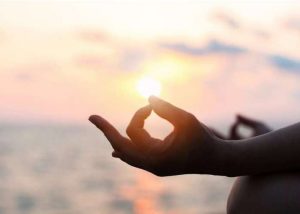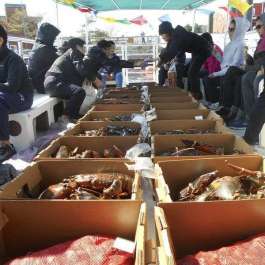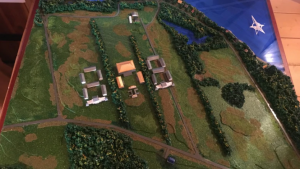“Uprooting all confusion from your mind,
Stay with me here in rest and quiet.
At this very moment the fear of death is full upon you;
You are thinking, ‘Safety lies on the far side of the hill;
If I stay here I shall be caught!’
This fear and hope is why you wander in Samsara . . .” – Milarepa (kreisels.com)
Reaching the Manang district of Nepal on the Annapurna Circuit, every trekker seems to have fathomed the teachings of the yogi Milarepa: after days of continuous walking, before moving on to the Thorong La pass or Tilicho Lake, they rest for a day at Manang or Braga village. They don’t stop just to acclimatize, however—enchanted by their mystical, sublime surroundings, they might also try to discover the reason for their wandering! Hidden between the mountains of Nepal and Tibet, this valley may not be one of the beyuls, but for hundreds of years it has attracted Buddhist yogis and gurus on both sides of the mountains as a place of peace, refuge, and meditation.
Manang and Braga (or Bhraka) are adjacent villages about three kilometers apart in the upper region of the district of Manang, which lies to the northwest of Kathmandu. At an altitude of around 11,200 feet, these villages boast many old gompas. The ancient Braga Gompa is famous not merely because it is around six hundred years old and yet invulnerable compared to other, more dilapidated monasteries, but also because of its proximity to the “Milarepa cave,” situated at an altitude of about 13,450 feet near the mountain Annapurna III.
Legend has it that the poet and great ascetic Milarepa, who lived in the 11th century, came to Nye Shang (modern-day Manang) and meditated for six years in a cave. Milarepa eventually attained enlightenment in the mountains of Nepal, and composed many songs along the way. Those of the deer, the hunter, and his dog are very famous in the hinterland of Manang. It is said that Milarepa was once disturbed in his meditation by a deer that was being chased by a dog, which in turn was being followed by a hunter named Kera Gompa Dorjee. When Milarepa did not allow the hunter to kill the deer, the hunter shot his arrows at Milarepa. The arrows could do no harm to the yogi, and instead of being angry with the hunter, he started teaching all three the way to attain salvation in the form of three songs: the song of the deer, the song of the dog, and the song of the hunter. Milarepa had a great influence upon the people of Nye Shang, and many, including the hunter, became his disciples.
Braga Village is situated in the foothills of the mountain where Milarepa meditated. The Buddhist community residing here and in nearby villages greatly reveres the region for its prodigious beauty and spiritual significance. Braga Gompa, a monastery in the Kagyu lineage, is an austere, two-story building of stone, mud, and pinewood set against a unique, craggy backdrop. The attractive three-story chorten on one side serves to distinguish it from the other buildings nearby. Entering the gompa, the first thing one sees at the main entrance is a large, colorful prayer wheel and a fearful protector deity to repel evil spirits; both, according to the caretaker Karma Tsering, are more than five hundred years old.
In the shrine room are hundreds of large and small statues of different Buddhas and high lamas. On the five-tiered main altar are small metal statues, one each, of the historical Buddha Shakyamuni and the bodhisattva of compassion, Avalokiteshvara. Most of the upper shelves on the walls bear small clay statues of Shakyamuni and the Buddha Amitabha. Other clay statues of lamas brought from Kathmandu, Tibet, and Bangladesh adorn one wall, while below the statues of Tara on the top shelf of the northern wall are statues of the Karmapa, Tai Situ Rinpoche, and the Shamarpa. Large bronze statues of Milarepa, Vajrasattva, and Tara behind the altar catch the eye of visitors, as does the colorful statue of Guru Rinpoche flanked by wrathful deities placed on the middle shelf on the wall to the altar’s right. The wooden pillars and beams are all finely crafted and painted, and are hung with colorful ribbons and masks. It is difficult to discern the intricacy of the ornamentation as sunlight enters only from an opening in the ceiling. The main attraction, however, is the complete sets of the Kangyur and Tengyur written on Tibetan and Nepali paper in gold.
Karma Tsering also provided some information regarding the religious ceremonies performed in the gompa. “Locals worship every day, but during Dashain puja [a penitential puja performed by the lamas to pray for the expurgation of the vicinity after the animal sacrifices made during the Dashain festival] in October and Nyung Ne Fasting in April, the congregation is overwhelming. The head lama of the gompa, Lama Sonam Tsering, also comes from Kathmandu during special occasions,” he said, adding that “in 2010, at Braga, we organized a Milarepa festival. The participation was beyond imagination. Even Ani Choying [Drolma], the famous singer nun, came and sang at the Milarepa cave.”
Seventy-year-old Cheden Ghale is not as ecstatic as Karma Tsering, however. Although he himself is the proprietor of Mungji Lodge, he is not happy with the way that tourism and globalization have haphazardly crept into the area and eroded traditional beliefs and practices. He is afraid that the sanctity and the natural and spiritual richness of Braga may be spoiled.
It was in these mountains, once, that the yogi Milarepa meditated and sang his songs about relief from suffering and of love and benevolence. Prayers for the welfare of all sentient beings still resonate in the chambers of the age-old monasteries today. Following the Kagyu tradition, the people of Braga and Manang have kept the teachings of the legendary yogi alive. Kera Gompa Dorjee’s bows and arrows may have been destroyed by time, but Milarepa’s songs still echo in the mountainous valley. The whispering wind seems to carry the mellifluous voice of the guru:
“. . . I shall now teach you the Six Yogas of Naropa,
And set you to practicing Mahamudra.” (kreisels.com)
All photographs are by the author.
For more information, see:
Beyul
Annapurna Circuit
Dashain
The Deer Song: Songs of Milarepa (kreisels.com)

















